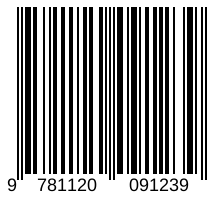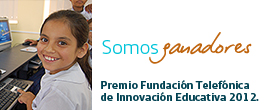The end of the school year in Level 4 was really awesome. In this last mission, students learnt about different types of portraits, such as self-portraits, abstract portraits or profile portraits. They discovered the artworks of some famous artists like Picasso, Sargent or Renoir and compared their painting styles. They were impressed with the Picasso's... Seguir lendo →
World Mission 4: Animal Fact File
World Mission 4 in Level 5 was a hard challenge but I knew they could do it. They had to search on internet for information about an animal, write a draft and create a slide show with text and images using LibreOffice Impress. They were delighted with this experience so, I am sure we will... Seguir lendo →
World Mission 4: At the restaurant
In this new mission, students in Level 4 had to write in pairs a short dialogue in a restaurant. Nesta nova misión, os alumnos e alumnas de 4º traballaron en parellas para escribir un pequeno diálogo nun restaurante. They organized the task following four steps. A tarefa estaba dividida en catro pasos. 1st Level: Desing the... Seguir lendo →
World Mission 4: Animal book
What is your favourite wild animal? What does it look like? What can it do? In this new mission, students in Level 3 had to write a book about a wild animal. In order to decide what animal they were going to write about, we wrote on some pieces of paper all the animals they... Seguir lendo →
WORLD MISSION 4
Are you ready for a new mission? On this occasion, Donkey Kong needs your help. Do you want to know more about him?. Here you have his character card. Under the control of a group of the evil TIKI TAK Tribe, the animals of Donkey Kong Island have stolen Kong's Banana Hoard . You will... Seguir lendo →
WORLD MISSION LEVEL 4
Do you know a superwoman? We do. And they all are always close to us. Last Mach, 8th we celebrated at school a special date. "International Women's Day is celebrated in many countries around the world. It is a day when women are recognized for their achievements without regard to divisions, whether national, ethnic, linguistic,... Seguir lendo →
WORLD MISSION 3: Level 3
Where do you live? In a big city or in a small village. Do you like your hometown? Do you want to know where we live? This time, my students had to write about the place they live. Some of us live in a very small village called Forcarei . Others live in the country,... Seguir lendo →
Mission 2: A survey about frecuency
They got it! Mission 2 is over. In this new mission, students in Level 5 found out about the frecuency students in Level 6 do something at the weekend and wrote a short report. Nesta ocasión, os alumnos de 5º averiguaron a frecuencia coa que os alumnso de 6º fan unha actividade durante o fin... Seguir lendo →
What’s in my kitchen?
What a delicious mission!This time, students in level 6 had to write about their kitchen and the food they have in their fridges and cupboard. The mission had different levels: Level 1: Make notes Level 2: Draw or find pictures according to the notes. Level 3: Write a draft Level 4: Prepare the writing Level... Seguir lendo →
World Mission 2: My favourite subject
Here you have our last mission in Level 3 What an interesting mission!This time, they had to write about school timetables and their favourite school day and favourite subject. It was a great opportunity for us to get to know each other better. The mission had different levels: Level 1: Complete your timetable Level 2:... Seguir lendo →
World Mission 2: A TV interest survey
World Mission 2 is completed in Level 4. In this new mission, students found out about TV interest in their class and wrote a short report.To do so, they had to beat different levels: Level 1: Write a questionare Level 2: Interview a friend Level 2: Interview Level 3: Write a draft. Level 4: Prepare... Seguir lendo →





























